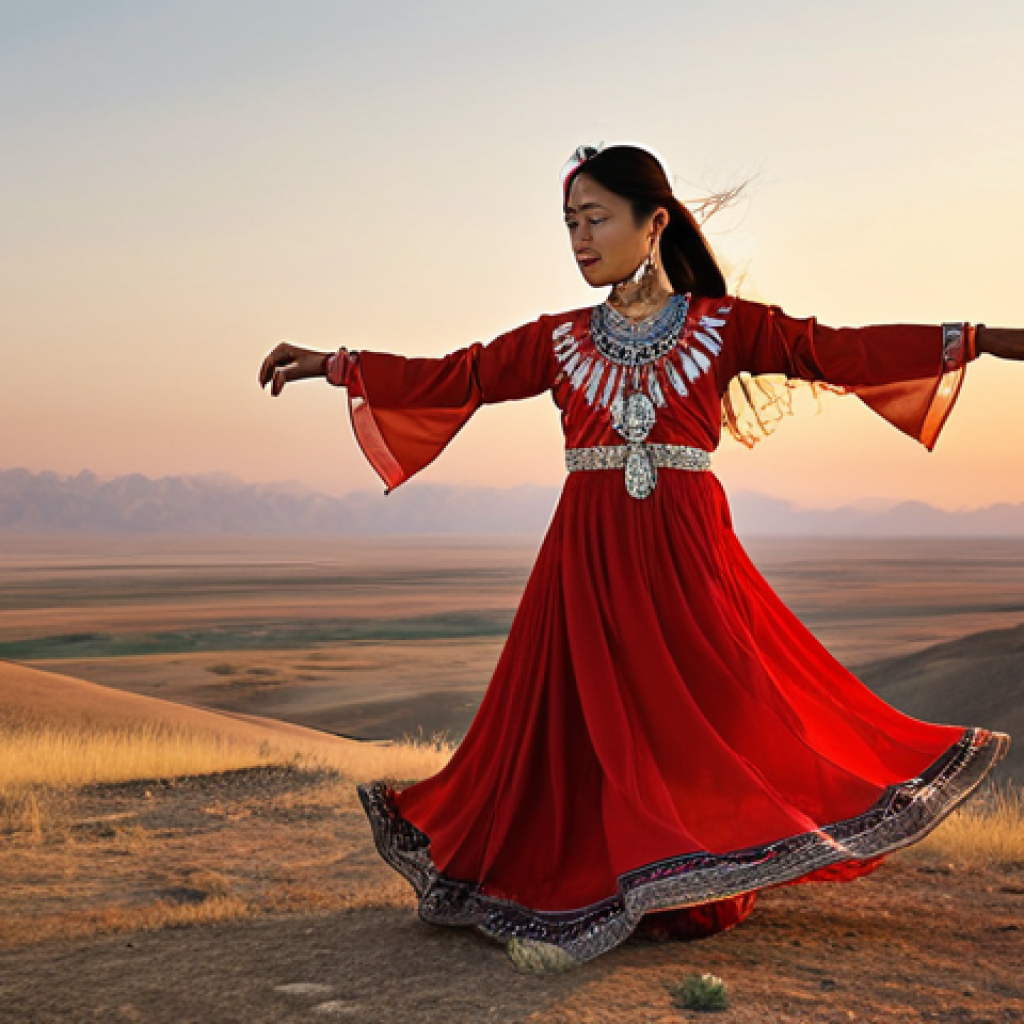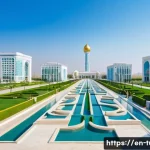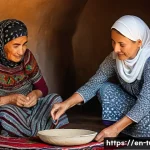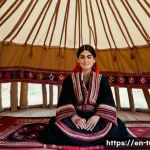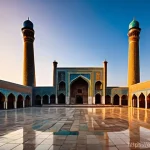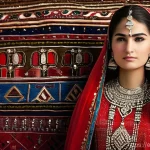Stepping into the vibrant world of Turkmen traditional dance feels less like observing a performance and more like experiencing a living, breathing piece of history.
Every intricate step, every subtle gesture, whispers stories of a heritage deeply rooted in the vast Central Asian landscape. I remember the first time I saw it; the dancers’ flowing silk dresses and precise, yet incredibly fluid, movements created a mesmerising spectacle that truly transported me.
It wasn’t just entertainment; it felt like a direct, visceral connection to generations of resilient people. In our rapidly globalizing world, these timeless art forms are more vital than ever.
They serve not merely as cultural relics but as dynamic expressions of identity, preserving ancient narratives and fostering community. Many modern initiatives are actively working to document and revitalise these dances, ensuring that their unique rhythms find new audiences and continue to evolve without losing their authentic soul.
From remote villages to international cultural festivals, the efforts to share Turkmenistan’s choreographic treasures are gaining momentum, captivating hearts far beyond its borders.
So, what exactly makes this art form so profoundly moving and enduring? We’ll get to know it accurately.
The Echoes of Ancient Steppes: A Choreographic Chronicle
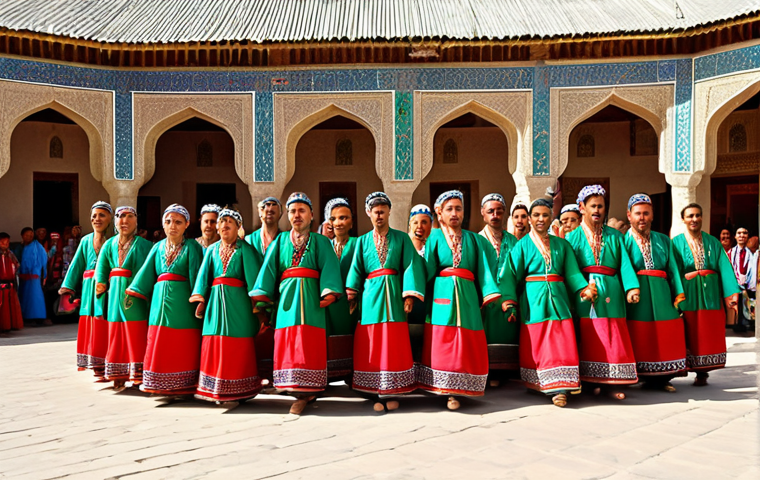
The deep historical roots of Turkmen traditional dance truly captivate me. When I first delved into its origins, it felt like uncovering layers of an ancient manuscript, each layer revealing more about the nomadic tribes and settled communities that shaped this vast Central Asian land.
The movements aren’t just arbitrary; they are direct reflections of a life lived close to nature, of the rhythms of daily chores, the thrill of the hunt, and the solemnity of spiritual rites.
You can see the grace of an eagle soaring, the strong stride of a horse, or the gentle sway of a desert plant in the dancers’ fluid motions. It’s a powerful narrative, told not with words, but with the body.
I remember a particularly moving performance where a dancer portrayed a bird in flight; the subtle flick of the wrist, the extended arm, the sudden dip – it wasn’t mimicry, it was pure embodiment, a spiritual connection that transcended mere imitation.
This depth, this genuine connection to a bygone era, is what gives Turkmen dance its unparalleled authenticity and emotional resonance. It reminds us that art isn’t just about beauty, but about bearing witness to history.
1. Tracing the Ancient Rhythms
The earliest forms of Turkmen dance are thought to have emerged from ritualistic practices, tied to shamanistic beliefs and agricultural cycles. Imagine communities gathering under the vast Central Asian sky, moving in unison to invoke rain, celebrate a successful harvest, or prepare for battle.
These weren’t performances in the modern sense but communal expressions of hope, fear, and solidarity. The simple, repetitive steps, the stamping of feet, and the clapping of hands would have created a hypnotic rhythm, drawing everyone into a collective trance.
What struck me most was learning about how these early dances were not just for celebration but served as a crucial form of oral history. Grandparents would teach children specific movements that depicted a successful hunt or a brave warrior’s tale, ensuring that the legacy of their ancestors lived on through their bodies.
It’s a remarkable testament to human ingenuity and the enduring power of movement as a form of communication, one that bypasses language barriers and speaks directly to the soul.
2. Influences Across the Silk Road
Turkmenistan’s location along the historic Silk Road meant that its culture, including its dance, was never insular. I found it fascinating to see how influences from Persia, the Arabian Peninsula, and even far-off China subtly wove their way into the local traditions.
Traders brought not only goods but also stories, melodies, and new movements. Yet, the core Turkmen identity remained distinct, absorbing these external elements and transforming them into something uniquely its own.
For instance, while you might spot a graceful hand gesture reminiscent of Persian classical dance, its application within a Turkmen dance piece would carry a different emotional weight, a more grounded and robust quality typical of the steppe people.
This cultural exchange is a beautiful reminder that while traditions are deeply rooted, they are also living, breathing entities capable of evolution and adaptation, enriching themselves without losing their essence.
It’s like a grand tapestry, with each thread adding to its intricate beauty while maintaining its original strength.
Weaving Stories in Motion: The Symbolic Language of Movement
One of the most profound aspects of Turkmen traditional dance, for me, is its incredible ability to tell stories without a single spoken word. Every gesture, every turn, every lift of the hand or arch of the back, is imbued with layers of meaning, reflecting the deep philosophical and cultural values of the Turkmen people.
It’s not just aesthetically pleasing; it’s a living, breathing dictionary of their heritage. I remember watching a performance where a dancer moved with such deliberate slowness, then suddenly erupted into a series of quick, powerful leaps.
It was explained to me afterwards that this sequence depicted the arduous journey across the desert, followed by the joyous discovery of an oasis. The way they conveyed the struggle and the relief solely through their bodies was breathtaking.
It showed me that true artistry lies in the ability to evoke deep emotion and understanding through non-verbal cues. This symbolic richness is precisely why these dances are so much more than mere entertainment; they are a profound cultural text.
1. The Lexicon of the Body
The human body becomes an articulate storyteller in Turkmen dance, with specific movements carrying universally understood meanings within the culture.
For example, open palms facing upwards often signify an offering or a prayer for blessings, while a rapid turning motion can represent the swirling dust of the steppe or the dynamic energy of a young warrior.
I’ve observed how the posture itself speaks volumes: a humble, slightly bowed head might show respect, while an erect, proud stance with arms outstretched asserts strength and leadership.
My personal takeaway is that these aren’t just pretty poses; they are deeply ingrained codes that generations have understood and passed down. It’s like learning a secret language that unlocks the soul of a people, and the more you learn, the more profound your appreciation becomes.
It’s a connection that feels both ancient and incredibly immediate, bridging the gap between performer and observer with a shared understanding.
2. Depicting Daily Life and Grand Narratives
What truly fascinates me about these dances is their dual capacity: to portray the mundane routines of everyday life with poetic grace and to encapsulate epic historical sagas.
You might see a dance that mimics the simple act of baking bread or weaving carpets, where the movements are gentle and rhythmic, reflecting the patient artistry of the craft.
Then, in the very next piece, you could be witnessing a reenactment of a heroic battle or the arduous journey of a nomadic tribe, complete with dramatic pauses and powerful, sweeping motions.
The transitions are seamless, illustrating the interconnectedness of life’s small moments and its grand narratives. For instance, the “Kushtdepdi” dance, a widely recognized form, embodies community spirit and celebration, often performed in a circle, symbolizing unity and endless joy.
Its energetic, synchronized movements reflect the resilience and collective strength of the Turkmen people, a testament to their enduring spirit through centuries of challenges and triumphs.
This versatility, this ability to shift from the intimate to the epic, makes Turkmen dance incredibly rich and endlessly engaging.
Beyond the Steps: The Resonant Soundscapes and Attire
Turkmen traditional dance isn’t just about the visual spectacle; it’s an immersive experience where every element plays a crucial role. The music, the vibrant costumes, and even the intricate jewelry are not mere accessories but integral components that enhance the narrative and emotional depth of the performance.
I remember being utterly captivated by the interplay between the dancers’ movements and the live music. It wasn’t just background sound; it was a living, breathing entity that guided every turn, every jump, every subtle gesture.
The resonant tones of the *dutar*, a traditional two-stringed instrument, filled the air, carrying ancient melodies that seemed to whisper tales of the past, creating an atmosphere that was both electrifying and deeply spiritual.
The way the dancers’ silk robes flowed with each movement, catching the light, added another layer of visual poetry, making the entire experience feel otherworldly.
It’s a holistic art form, where sight and sound intertwine seamlessly to transport the audience.
1. The Soulful Rhythms and Melodies
The music accompanying Turkmen dance is as rich and varied as the dances themselves, often featuring traditional instruments like the *dutar*, *gyjak* (a bowed string instrument), and various percussion instruments.
The melodies are frequently soulful and evocative, capable of shifting from slow, mournful tunes to fast, exhilarating beats. What I find particularly striking is how the musicians and dancers are so attuned to each other.
There’s a palpable connection, almost as if they share a single heartbeat, guiding the performance with an organic fluidity that can only come from deep understanding and practice.
The rhythms are not just background noise; they dictate the pace, intensify the emotion, and even provide cues for specific movements. I recall a moment where the *dutar* player subtly changed a phrase, and the dancer immediately responded with a shift in their expression and a new sequence of steps.
This improvisation within a traditional framework is a testament to the artists’ expertise and the living nature of the art form.
2. Adornments of Identity: Costumes and Jewelry
The traditional attire worn by Turkmen dancers is nothing short of breathtaking. The flowing silk dresses (*keteni*), often in vibrant reds, greens, and blues, are not only beautiful but also designed to accentuate the dancers’ movements, creating a mesmerizing spectacle of color and motion.
But it’s the intricate embroidery and the heavy, often silver, jewelry that truly tell a story. Each piece of jewelry – from the elaborate headpieces to the large, decorative medallions and armbands – is a work of art, often passed down through generations, carrying historical and tribal significance.
They’re not just ornamental; they are symbols of status, heritage, and protection. I was particularly fascinated to learn that the weight and jingle of the jewelry themselves can become part of the performance, adding a percussive element to the dance.
It transforms the dancer into a walking, dancing museum of cultural heritage, where every thread and every piece of metal speaks volumes about the wearer’s identity and the rich tapestry of Turkmen history.
| Element of Turkmen Dance | Primary Characteristics | Cultural Significance | Role in Performance |
|---|---|---|---|
| Movements | Fluid, precise, often mimicking nature (animals, elements) and daily life actions. Grounded. | Storytelling of history, daily chores, rituals; expression of resilience, joy, sorrow. | Conveys narrative, emotion, and character; forms core choreographic expression. |
| Music | Dominated by *dutar*, *gyjak*, percussion. Rhythmic, soulful, dynamic. | Evokes ancient moods, supports emotional narrative, preserves traditional melodies. | Sets pace and mood, provides cues for dancers, creates immersive soundscape. |
| Attire (*Keteni* Silks) | Vibrant, hand-woven silk robes, often red, green, blue. Intricate embroidery. | Symbol of cultural identity, status, regional affiliation; connects to ancient textile traditions. | Enhances visual flow, adds color and drama; fabric movement becomes part of the dance. |
| Jewelry | Heavy, often silver, elaborate pieces (headpieces, necklaces, bracelets). | Family heritage, tribal identity, protection (amulets); artistic expression. | Adds visual sparkle and percussive sound (jingle); completes traditional aesthetic. |
| Communal Spirit | Often performed in circles or group formations, emphasizing unity. | Fosters community bonding, celebration of shared identity, collective joy. | Engages audience, creates a sense of shared experience, symbolizes social cohesion. |
The Dancers’ Soul: Embodiment of Spirit and Resilience
What I’ve come to understand through my journey with Turkmen dance is that it’s far more than a physical exercise or a series of learned steps; it’s an embodiment of the Turkmen people’s very soul.
The dancers, in their performance, channel a profound sense of spirit, resilience, and connection to their heritage that is truly palpable. You can see it in their eyes, in the intense focus on their faces, and in the unwavering strength of their postures.
It’s a demanding art form, requiring not just physical prowess but an almost spiritual discipline to convey the depth of emotion and historical narrative.
I particularly admire the older dancers I’ve seen, whose movements, while perhaps not as agile as the youth, carry an unparalleled wisdom and gravitas, each step a testament to a lifetime of experience and dedication.
It’s this dedication, this living connection to tradition, that makes their performances so incredibly moving and authentic. They are not just performing; they are living their history before your very eyes.
1. Discipline and Dedication: A Lifelong Journey
Becoming a proficient Turkmen dancer is a lifelong commitment that demands immense discipline, patience, and a deep respect for tradition. It starts at a young age, with children learning foundational steps and rhythms, often from their elders within the family or community.
This isn’t just about mastering technique; it’s about internalizing the cultural narratives, understanding the symbolic language, and developing the emotional intelligence to convey profound stories.
I’ve heard stories of dancers practicing for hours under the harsh sun, perfecting a single gesture until it expresses exactly the right nuance. This level of dedication is truly inspiring.
It’s a reminder that true mastery in any art form requires not just talent, but unwavering persistence and a humble willingness to learn from those who came before you.
The result is a performance that resonates with genuine effort and deep personal investment, far beyond what mere talent could produce.
2. Passing the Torch: Mentorship and Community
The transmission of Turkmen dance is deeply rooted in a rich tradition of mentorship. It’s not typically taught in formal academies in the same way Western classical ballet might be.
Instead, much of the knowledge is passed down organically, from master to apprentice, from elder to youth, within families and close-knit communities.
I witnessed a beautiful instance where an older woman patiently guided a young girl’s hands, adjusting her posture and explaining the historical context of each movement.
This intimate, intergenerational learning environment fosters a strong sense of community and ensures that the nuances and spirit of the dances are preserved authentically.
It’s a powerful model for cultural preservation, emphasizing personal connection and shared responsibility. This communal aspect ensures that the art form remains vibrant and relevant, evolving while staying true to its ancient roots, a testament to the power of collective cultural ownership.
Safeguarding the Legacy: Modern Tides and Enduring Traditions
In a world that seems to accelerate by the day, the efforts to preserve and promote Turkmen traditional dance are more crucial than ever. It’s a delicate balance: embracing modernity without sacrificing authenticity.
My conversations with cultural enthusiasts and dancers in Turkmenistan revealed a strong commitment to this preservation, alongside a forward-thinking approach to ensure its continued relevance.
There’s a palpable sense of pride in their heritage, coupled with a desire to share it with a global audience. These efforts are not just about archiving old dances; they are about fostering new generations of dancers, creating accessible educational materials, and even adapting performances to modern stages while retaining their core integrity.
It’s a testament to the resilience of cultural identity in the face of globalization, showing that ancient art forms can thrive in contemporary contexts if nurtured with care and vision.
1. Revival and Documentation Initiatives
Across Turkmenistan, and indeed among the Turkmen diaspora, there are significant initiatives underway to document and revive traditional dance forms that might otherwise be lost.
This includes meticulous ethnographic research, recording elderly dancers, and creating comprehensive archives of movements, music, and costume designs.
I’ve seen some of these digital archives, and they are truly invaluable – preserving knowledge that might otherwise vanish with time. Furthermore, cultural institutions are actively establishing dance schools and workshops, providing structured environments where young people can learn these intricate traditions.
This proactive approach is vital. It’s not enough to simply admire these dances; we must actively participate in their preservation, ensuring that the next generation has the opportunity to connect with their rich cultural past.
These efforts are building a bridge between antiquity and the future, ensuring that the rhythmic heartbeat of Turkmenistan continues to resonate.
2. Navigating Modernity: Innovation with Respect
The challenge for traditional art forms in the modern era is how to innovate without losing their soul. For Turkmen dance, this means exploring new performance venues, collaborating with contemporary artists, and utilizing digital platforms to reach wider audiences, all while maintaining the integrity of the original movements and narratives.
I’ve seen exciting examples where traditional dances are incorporated into modern theatrical productions, introducing them to audiences who might not otherwise encounter them.
However, a key principle that resonated with me during my observations is the paramount importance of “respectful innovation.” This means any adaptation must honor the spirit and symbolism of the original form, ensuring that new interpretations enhance, rather than diminish, its profound cultural value.
It’s a fine line to walk, but when done thoughtfully, it allows these ancient rhythms to find new life and new admirers, ensuring their enduring legacy for centuries to come.
A Global Rhapsody: Sharing Turkmen Dance with the World
One of the most exciting developments I’ve witnessed is the increasing presence of Turkmen traditional dance on the international stage. It’s truly a delight to see these captivating performances transcend geographical and cultural boundaries, introducing audiences worldwide to the rich tapestry of Turkmenistan’s heritage.
From folk festivals in Europe to cultural exchange programs in North America, Turkmen dancers are sharing their unique art form with an eager global community.
This outward movement is so important, not just for the dancers themselves, who gain invaluable experience and exposure, but for fostering greater understanding and appreciation of diverse cultures globally.
I remember feeling a surge of pride, even as an outsider, when I saw a Turkmen dance troupe receive a standing ovation at an international festival. It was a clear demonstration of art’s power to connect people, proving that beauty and human expression are universal languages.
1. Cultural Exchange and International Festivals
Participation in international cultural festivals and exchange programs has become a vital avenue for showcasing Turkmen traditional dance. These platforms provide an incredible opportunity for dancers to share their art, learn from other cultures, and dispel stereotypes.
It’s a dynamic two-way street: Turkmen dancers introduce their unique heritage to new audiences, and in turn, they bring back new perspectives and ideas that can enrich their own artistic development.
I’ve spoken with dancers who recount how inspiring it is to see diverse reactions from people who have never experienced Central Asian dance before, sparking curiosity and building bridges of understanding.
These interactions are invaluable for promoting cultural diplomacy, showing the world the beauty and richness of Turkmen traditions far beyond any headlines or political narratives.
It’s a testament to the unifying power of art, breaking down barriers one mesmerizing performance at a time.
2. Digital Presence and New Audiences
In today’s digital age, the internet has become an indispensable tool for sharing traditional art forms with a global audience. Websites, social media platforms, and online video channels are now crucial for documenting performances, offering tutorials, and connecting with enthusiasts worldwide.
I’ve personally spent hours watching high-quality recordings of Turkmen dance online, allowing me to delve deeper into specific styles and learn about regional variations that I might not otherwise encounter.
This digital presence is democratizing access to this beautiful art form, allowing anyone, anywhere, to experience its magic. It’s an exciting prospect, creating new communities of appreciation and inspiring a new generation of dancers and scholars.
The ability to instantly share the vibrant movements and soulful melodies of Turkmen dance with millions across the globe means that its legacy is not only preserved but also actively expanding its reach, ensuring its enduring place in the global cultural mosaic.
Concluding Thoughts
My journey through the rich tapestry of Turkmen traditional dance has been nothing short of revelatory. It’s a profound testament to a people’s history, their values, and their enduring spirit, eloquently expressed not through words, but through the evocative language of movement, music, and adornment.
I’ve truly come to appreciate how these dances are living chronicles, embodying ancient narratives and communal resilience. Witnessing their beauty and depth reminds us of the universal power of art to connect generations and bridge cultures, leaving an indelible mark on the soul.
Useful Information to Know
1. Where to Experience Turkmen Dance: While firsthand experience in Turkmenistan is ideal, you can often find Turkmen cultural performances at international folk festivals, cultural exchange events, and online platforms like YouTube that feature professional troupes and historical documentaries.
2. Key Musical Instruments: The *dutar*, a two-stringed long-necked lute, is central to Turkmen music and dance, often accompanied by the *gyjak* (a bowed string instrument) and various percussion, all contributing to the distinctive steppe soundscape.
3. Symbolism in Movement: Every gesture in Turkmen dance is rich with meaning, often mimicking nature (like the flight of an eagle or the sway of grass) or depicting daily life and historical events. Understanding these symbols deepens the appreciation of the performance.
4. Significance of Attire: The vibrant silk robes (*keteni*) and intricate silver jewelry worn by dancers are not just decorative; they are imbued with cultural, historical, and tribal significance, often representing status, heritage, and protection.
5. Preservation Efforts: There’s a strong ongoing commitment within Turkmenistan and among its diaspora to preserve traditional dance through documentation, educational initiatives, and thoughtful innovation to ensure its legacy continues for future generations.
Key Takeaways
Turkmen traditional dance is a holistic art form deeply rooted in history, embodying the spirit and resilience of its people. It communicates profound narratives through symbolic movements, soulful music, and culturally rich attire.
This vibrant heritage is diligently preserved through intergenerational mentorship and modern initiatives, ensuring its enduring presence on both local and global stages, a testament to its timeless beauty and cultural significance.
Frequently Asked Questions (FAQ) 📖
Q: What is it about Turkmen traditional dance that makes it so uniquely moving and enduring?
A: Oh, it’s truly something special, isn’t it? For me, what strikes deepest is its profound storytelling without a single spoken word. It’s not just a series of beautiful movements; it feels like a direct, unfiltered glimpse into centuries of Turkmen life.
Every subtle tilt of the head, every graceful hand gesture, every single step carries the weight of history, echoing the struggles, joys, and resilience of the Turkmen people navigating that vast Central Asian landscape.
I remember watching one particular performance, and the sheer fluidity combined with the incredible precision was breathtaking. It wasn’t just about technique; it was about soul.
You could feel the connection to the land, the echoes of nomadic ancestors, and the unbreakable spirit – it genuinely gives you goosebumps because it’s a living, breathing narrative passed down through generations.
That visceral connection, that sense of witnessing something so ancient yet so vibrantly alive, is what makes it truly unforgettable and, I think, why it endures so powerfully.
Q: How are modern initiatives working to preserve and revitalize these ancient dance forms without losing their authentic soul?
A: It’s an incredibly delicate balance, isn’t it? But what’s truly inspiring is the dedication I’ve seen from various groups, both within Turkmenistan and internationally.
Modern initiatives aren’t just about putting these dances on a stage; they’re about robust documentation – think detailed ethnography, video archives, and oral histories from elder dancers.
Then there’s the active teaching component: dedicated schools and community groups tirelessly pass down the knowledge to younger generations, ensuring the intricate steps and the deep cultural context aren’t lost.
They’re finding innovative ways to engage new audiences, too – from incorporating elements into contemporary dance without diluting the core essence, to featuring them prominently at global cultural festivals.
The key, as I’ve observed, is a profound respect for authenticity. It’s about letting the art form breathe and adapt subtly, much like a living language, rather than embalming it.
It’s really about ensuring its “soul” – its inherent meaning and connection to identity – remains vibrant while finding new avenues for expression and appreciation.
Q: Beyond its visual appeal, what deeper cultural significance does Turkmen dance hold for its people?
A: It’s so much more than just a performance; it’s a bedrock of identity, truly. For the Turkmen people, these dances are a living lineage, a dynamic chronicle of who they are and where they come from.
Think about it: in a land with a rich oral tradition, these dances become visual and emotional repositories of history, values, and even the unique relationship they have with their environment.
They embody resilience, community spirit, and a deep connection to their heritage – literally embodying the saying, “We dance who we are.” When you see Turkmen people perform these dances, there’s a palpable sense of pride, of continuity, of belonging.
It’s not just an exhibition; it’s a reaffirmation of their cultural distinctiveness in a globalizing world. It connects them across generations, binding families and communities, fostering a sense of shared memory and future.
It’s a lifeline, a vibrant thread weaving through the fabric of their lives, carrying forward ancient narratives and strengthening their collective identity.
📚 References
Wikipedia Encyclopedia
구글 검색 결과
구글 검색 결과
구글 검색 결과
구글 검색 결과
구글 검색 결과
